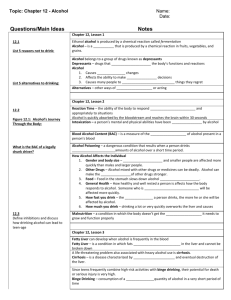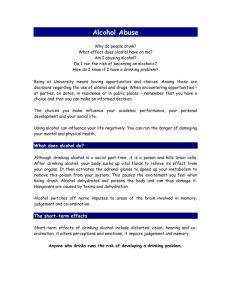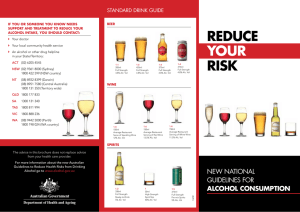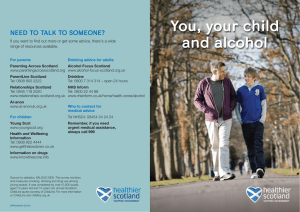speaking outline
advertisement
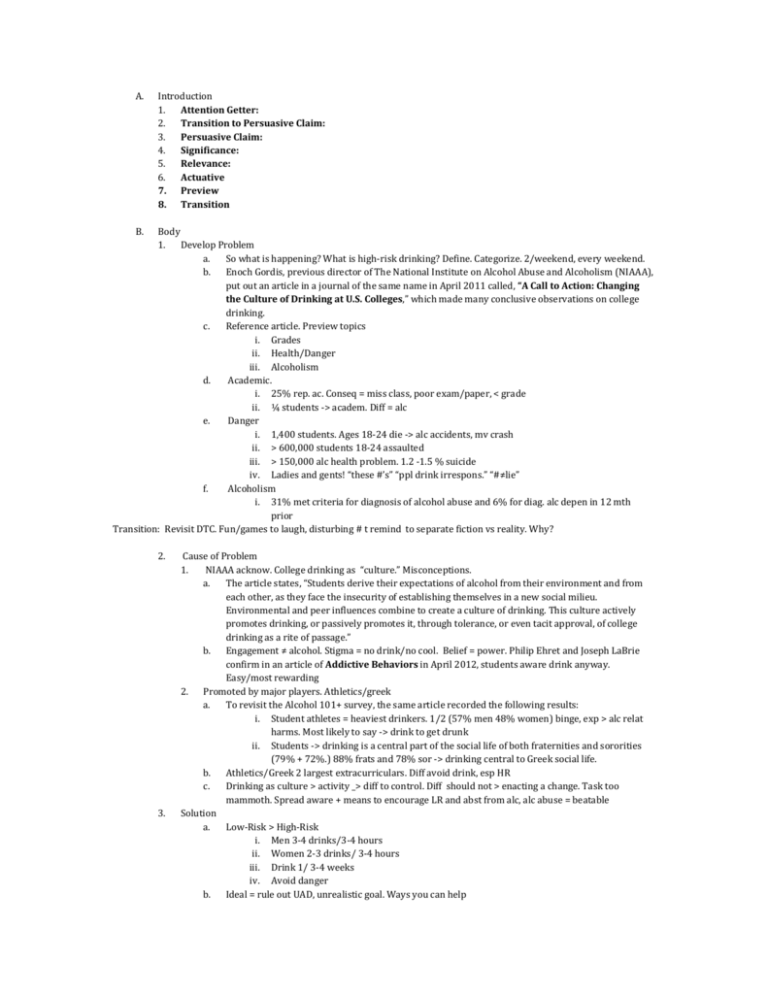
A. Introduction 1. Attention Getter: 2. Transition to Persuasive Claim: 3. Persuasive Claim: 4. Significance: 5. Relevance: 6. Actuative 7. Preview 8. Transition B. Body 1. Develop Problem a. So what is happening? What is high-risk drinking? Define. Categorize. 2/weekend, every weekend. b. Enoch Gordis, previous director of The National Institute on Alcohol Abuse and Alcoholism (NIAAA), put out an article in a journal of the same name in April 2011 called, “A Call to Action: Changing the Culture of Drinking at U.S. Colleges,” which made many conclusive observations on college drinking. c. Reference article. Preview topics i. Grades ii. Health/Danger iii. Alcoholism d. Academic. i. 25% rep. ac. Conseq = miss class, poor exam/paper, < grade ii. ¼ students -> academ. Diff = alc e. Danger i. 1,400 students. Ages 18-24 die -> alc accidents, mv crash ii. > 600,000 students 18-24 assaulted iii. > 150,000 alc health problem. 1.2 -1.5 % suicide iv. Ladies and gents! “these #’s” “ppl drink irrespons.” “#≠lie” f. Alcoholism i. 31% met criteria for diagnosis of alcohol abuse and 6% for diag. alc depen in 12 mth prior Transition: Revisit DTC. Fun/games to laugh, disturbing # t remind to separate fiction vs reality. Why? 2. 3. Cause of Problem 1. NIAAA acknow. College drinking as “culture.” Misconceptions. a. The article states, “Students derive their expectations of alcohol from their environment and from each other, as they face the insecurity of establishing themselves in a new social milieu. Environmental and peer influences combine to create a culture of drinking. This culture actively promotes drinking, or passively promotes it, through tolerance, or even tacit approval, of college drinking as a rite of passage.” b. Engagement ≠ alcohol. Stigma = no drink/no cool. Belief = power. Philip Ehret and Joseph LaBrie confirm in an article of Addictive Behaviors in April 2012, students aware drink anyway. Easy/most rewarding 2. Promoted by major players. Athletics/greek a. To revisit the Alcohol 101+ survey, the same article recorded the following results: i. Student athletes = heaviest drinkers. 1/2 (57% men 48% women) binge, exp > alc relat harms. Most likely to say -> drink to get drunk ii. Students -> drinking is a central part of the social life of both fraternities and sororities (79% + 72%.) 88% frats and 78% sor -> drinking central to Greek social life. b. Athletics/Greek 2 largest extracurriculars. Diff avoid drink, esp HR c. Drinking as culture > activity _> diff to control. Diff should not > enacting a change. Task too mammoth. Spread aware + means to encourage LR and abst from alc, alc abuse = beatable Solution a. Low-Risk > High-Risk i. Men 3-4 drinks/3-4 hours ii. Women 2-3 drinks/ 3-4 hours iii. Drink 1/ 3-4 weeks iv. Avoid danger b. Ideal = rule out UAD, unrealistic goal. Ways you can help i. Aware + address misconception 1. Ignore others, myth broken down, social ≠ binge ii. Students know better -> pros vs cons, sense of control iii. “Popular” = Leading influence 1. Be you. If in group -> pros vs cons iv. If you’re not = great. if you are = consider. Spread word. Talk responsibility. Victims can change culture. Transition: DTC earned favor, but they’re wrong. Dangerous culture. Must end C. Persuasive Conclusion 1. Summary 2. Visualize Benefits: 3. Call to Action 4. Clincher

